Marketing Strategy: What It Is and How to Create One
Karen Molina
February 29, 2024
Marketing Strategy: What It Is and How to Create One
Marketing is the lifeblood of business. It’s where creativity meets strategy, customer needs are matched with product offerings, and opportunities for growth are identified.
In this guide, we dive deep into what a marketing strategy is, why it's essential for any company, and provide a clear roadmap for creating your own.
Whether you're a seasoned marketing professional looking to refine tactics or an entrepreneur charting a new venture, this post will help elevate your marketing game.

The Importance of Having a Marketing Strategy
A successful marketing strategy can be the difference between failure and success in the business world. It provides a roadmap for where you want your digital marketing efforts to go, and more importantly, how you’ll get there. With a marketing strategy in place, you're better equipped to achieve your business goals, convert leads into customers, and compete at a higher level.
What is a Marketing Strategy?
At its core, a marketing strategy is a plan to achieve your commercial goals through carefully selected marketing channels and an understanding of your target market. It's a long-term approach to the development of a solid brand message, the conquest of market share, and enhanced customer satisfaction.
A marketing strategy outlines the who, what, where, when, and how of reaching prospects and turning them into potential customers. It’s what guides decisions about what products to pursue, how to price them, where to sell them, and how to promote.
Benefits of a Marketing Strategy
A marketing strategy brings several benefits that impact every facet of your business operations. It ensures that all marketing efforts support your business goals and provide a clear path to achieving them.
Clear Objectives and Direction
Marketing strategies provides clarity on what you're trying to achieve, what you consider success, and how you’ll measure it. This focus ensures you're not just “doing marketing,” but are working toward specific outcomes.
Target Customers Reach
Knowing your customers is half the battle. A well-defined marketing strategy helps you target your efforts to the right audience with the right messaging, improving efficiency and response rates.
Effective Resource Allocation
Resources—time, money, and personnel—are limited. A marketing plan helps allocate these resources wisely, investing in efforts that are most likely to produce the desired results.
Digital Strategy: Paid Media
In the realm of digital strategy, Paid Media is a crucial component that complements organic reach to amplify brand presence and maximize conversions. By leveraging paid marketing channels such as PPC (pay-per-click) advertising, display ads, social media marketing, and sponsored user generated content, businesses can target specific demographics, behaviors, and interests more precisely.
Paid media excels in driving immediate traffic and visibility, providing measurable results for campaigns. It's also an effective way to test new markets, introduce products, and raise brand awareness quickly. Analytics from a paid marketing campaign offers invaluable insights, which can be used to refine overall marketing strategies and increase ROI over time.
Online Marketing Strategies
Online marketing strategies are crucial for reaching a broader audience and establishing a strong digital presence. They encompass various marketing tactics, including conducting market research by a search engine optimization (seo) strategy, content creation, social media advertising, email marketing, and pay-per-click (PPC) campaigns.
Search engine optimization is a fundamental aspect of digital marketing, focusing on enhancing your website's visibility in search engine results. This is achieved by optimizing content with relevant keywords, improving site speed, and ensuring mobile-friendliness, among other techniques.
Content marketing strategy involves creating and distributing user generated content to attract and retain a clearly defined target audience. Through blog posts, infographics, eBooks, and videos, businesses can establish thought leadership and engage with customers.
Social media marketing strategy utilizes social platforms like Facebook, Twitter, Instagram, and LinkedIn to connect with your target audience. By crafting tailored content and leveraging the powerful targeting options these platforms offer, you can increase brand awareness and drive conversions with social media ads.
Email marketing strategy is a direct and personalized way to communicate with potential and existing customers. Segmented campaigns and automated triggers based on user actions can significantly improve engagement rates and drive sales.
PPC campaigns are a cost-effective digital marketing strategy that allows businesses to display ads on search engine results pages, websites, and social media platforms. You only pay when a user clicks on your ad, which can lead to immediate traffic.
Together, these marketing objectives form the backbone of a successful marketing strategy that can adapt to the ever-changing digital landscape, ensuring your business stays visible and competitive.
Marketing Strategies vs. Marketing Tactics
While often used interchangeably, marketing strategies and marketing tactics refer to different concepts within the marketing framework.
A marketing strategy encompasses the overarching goals and long-term vision of how a business intends to achieve growth, market positioning, and customer engagement. It's a broad plan that outlines the general approach a business will take to reach its target audience and convert them to customers. It involves a deep understanding of the brand’s value proposition, target market segmentation, positioning, and competitive landscape.
In contrast, marketing tactics are the specific actions and details a business takes to execute the larger strategy. They are the practical steps and techniques employed on a daily basis or for specific campaigns that move the needle toward the strategic goals.
The relationship between strategy and tactics is symbiotic: the strategy provides the direction and framework for the tactics to operate within, and the tactics provide the means to realize the strategic vision.
An effective marketing strategy necessitates that both, strategy and tactics are aligned and measured for performance to ensure the company's marketing strategy is achieved.

Key Components of a Strong Marketing Strategy
Good marketing strategies are comprehensive, incorporating several crucial components to ensure thorough planning and execution. Let's break down what these components are and why they matter.
Market Research and Analysis
Thorough research is the foundation of a sound plan. Analyzing market trends, customer behavior, and competitor data provides invaluable insights that inform your strategy and tactical decisions.
Target Audience Identification
Who is interested in your product or service? What are their problems, desires, and preferences? Your marketing strategy must clearly identify your target audience to tailor campaigns and messaging effectively.
Setting Measurable Marketing Goals
Your goals should be SMART: Specific, Measurable, Achievable, Relevant, and Time-bound. Clear goals keep your team focused and provide benchmarks for evaluation.
Defining Unique Selling Proposition
What sets you apart? Your Unique Selling Proposition (USP) is a distinctive feature that highlights the benefits of your product or service. It’s a critical element that forms the basis of competitive advantage and your marketing messaging.
Selecting Marketing Channels
There are numerous ways to reach your audience: from traditional media like print and television to digital channels such as social media and search engines. Picking the right mix ensures your message is heard by the right people in the right place.
Creating a Budget
Money makes the marketing world go ‘round. A well-defined budget gives your strategy teeth—it’s the implementation plan that ensures your marketing programs have the appropriate levels of investment to make an impact.
Steps to Create a Marketing Strategy
Crafting a marketing strategy is both an art and a science. Here are the key steps you should follow to develop a winning strategy that meets your business objectives.
1. Conduct a SWOT Analysis
A SWOT analysis—evaluating your Strengths, Weaknesses, Opportunities, and Threats—provides a strategic view of your marketing landscape. It will unearth critical factors that can shape your marketing approach.
2. Define Your Target Audience
Be precise in defining who you’re selling to. Use demographic, psychographic, and behavioral data to develop buyer personas that help your team understand and connect with your ideal customers.
3. Set SMART Goals
As mentioned earlier, your goals should be Specific, Measurable, Achievable, Relevant, and Time-bound to be effective. Vague or unrealistic goals lead to ineffective strategies and demotivated teams.
4. Develop Your Unique Selling Proposition
Your USP is what you will communicate to your target audience consistently. It’s a promise of value that should be compelling and unique compared to your competitors.
5. Select Marketing Channels
Consider where your audience spends their time and where they are most likely to find out about your product. Whether it’s through content marketing channels, social media channels, or email marketing choose the channels that align with your audience’s preferences.
6. Create a Budget For Marketing Campaigns
Your budget needs to be realistic and reflect your marketing goals and the channels you plan to use. Understanding the financial commitment required allows you to make prudent decisions and ensures that you have a sustainable competitive advantage.
7. Implement and Monitor
Once your strategy is in place, it’s time to execute your plans. But the work doesn’t stop there. Regularly monitor and measure success performance of your marketing activities against your set goals. Having marketing teams make this more achievable it will enable you to make adjustments and improvements as you learn what works and what doesn’t.
Key Brand Messaging
Crafting key brand messaging involves pinpointing the core narratives that tell your brand's story in a resonant and consistent manner. Central to this is the articulation of your mission, vision, and values which collectively exemplify what your brand stands for. Your messaging should convey your USP decisively, emoting why your product or service is their best choice and ensuring it is tailored to resonate with your defined target audience, creating a memorable brand experience.

Key Performance Indicators (KPIs)
Key Performance Indicators are the metrics chosen to gauge how effectively a company is achieving key business objectives. For marketing, common KPIs include website traffic and user behavior, conversion rates, click-through rates, bounce rates, social media engagement, cost per lead, customer lifetime value, and return on marketing investment (ROMI). These indicators should be continually monitored to evaluate progress toward marketing goals, inform strategic adjustments, and measure overall marketing efficiency and impact.
Inbound Marketing Strategy
Inbound marketing is a strategic approach designed to attract customers through content and interactions that are relevant and helpful. Unlike outbound marketing, inbound marketing does not need to fight for potential customers' attention. By creating content designed to address the problems and needs of your ideal customers, you attract qualified prospects and build trust and credibility for your business.
Content Creation and Distribution
Content Marketing that answers your prospects' basic questions and needs, and share that content far and wide. By distributing valuable, relevant content through various marketing channels such as blogs, search engines, and social media, businesses become accessible to potential customers who are seeking information.
Social Media Strategy
Creating an effective social media campaign is vital for establishing an online presence and engaging with your target audience. It involves selecting the appropriate platforms where your potential customers are most active and tailoring content to each platform's unique environment.
The strategy should focus on creating and sharing engaging, relevant, and brand-consistent messages that encourage interaction through all social media accounts.
It's important to set goals, such as increasing follower count, boosting engagement rates, or driving website traffic, and utilize analytics tools to track progress and refine tactics.
Conclusion
overall marketing efforts is a crucial part of running a successful business. It provides a solid framework for navigating the complex world of customer acquisition and retention. Remember that a marketing plan is not a one-and-done deal. It requires constant reviewing and adapting to new challenges and opportunities.
By understanding the importance of successful marketing strategies and learning to craft a plan that aligns with your business goals, you can build a strong, customer-focused brand that stands out in the market.
Start today and take your first step toward a more strategic, intentional approach to marketing. Your business's bottom line will thank you.











